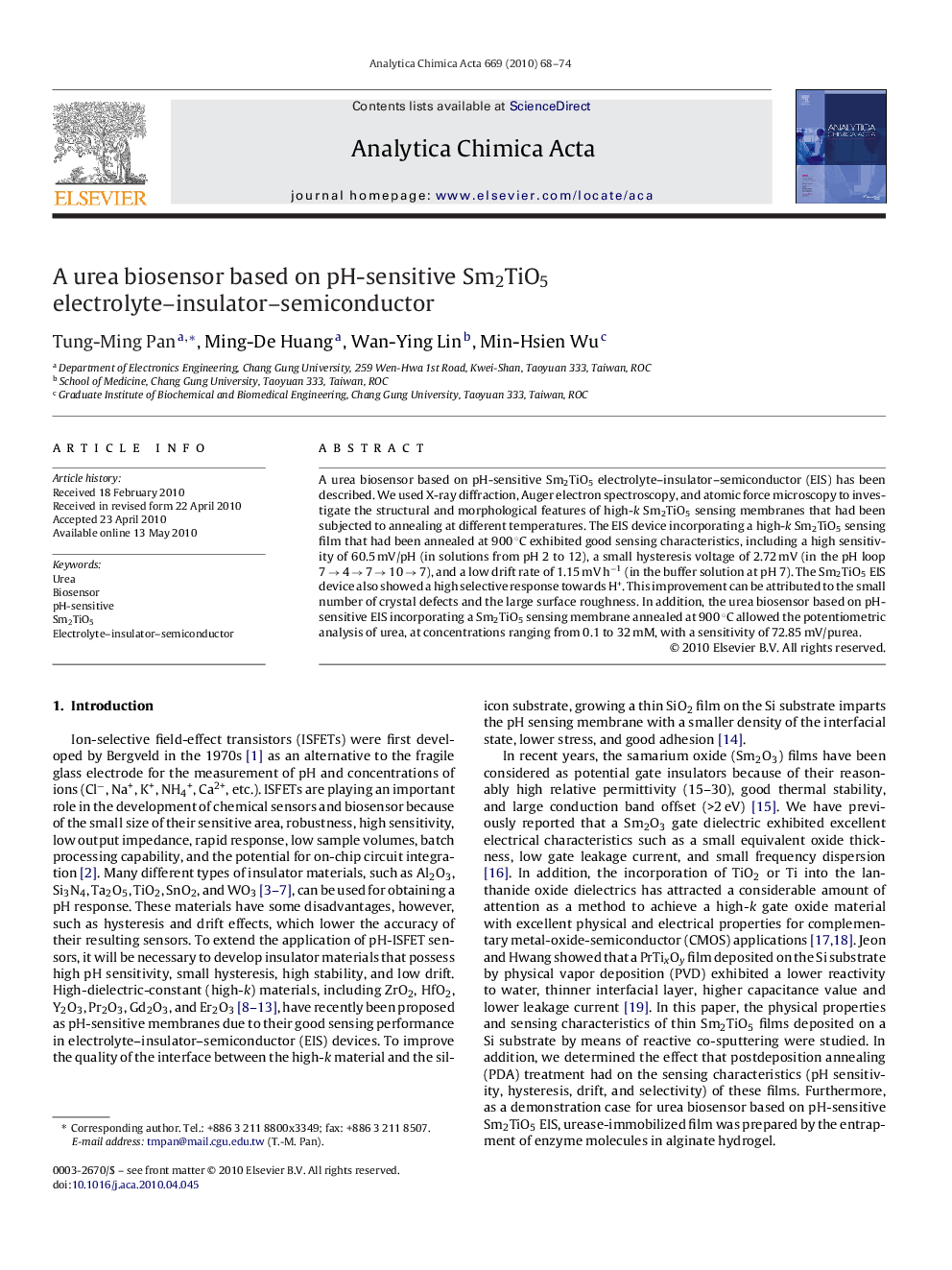| Article ID | Journal | Published Year | Pages | File Type |
|---|---|---|---|---|
| 1168094 | Analytica Chimica Acta | 2010 | 7 Pages |
A urea biosensor based on pH-sensitive Sm2TiO5 electrolyte–insulator–semiconductor (EIS) has been described. We used X-ray diffraction, Auger electron spectroscopy, and atomic force microscopy to investigate the structural and morphological features of high-k Sm2TiO5 sensing membranes that had been subjected to annealing at different temperatures. The EIS device incorporating a high-k Sm2TiO5 sensing film that had been annealed at 900 °C exhibited good sensing characteristics, including a high sensitivity of 60.5 mV/pH (in solutions from pH 2 to 12), a small hysteresis voltage of 2.72 mV (in the pH loop 7 → 4 → 7 → 10 → 7), and a low drift rate of 1.15 mV h−1 (in the buffer solution at pH 7). The Sm2TiO5 EIS device also showed a high selective response towards H+. This improvement can be attributed to the small number of crystal defects and the large surface roughness. In addition, the urea biosensor based on pH-sensitive EIS incorporating a Sm2TiO5 sensing membrane annealed at 900 °C allowed the potentiometric analysis of urea, at concentrations ranging from 0.1 to 32 mM, with a sensitivity of 72.85 mV/purea.
